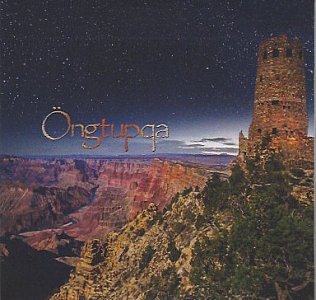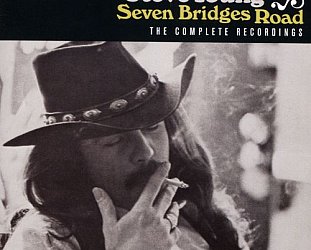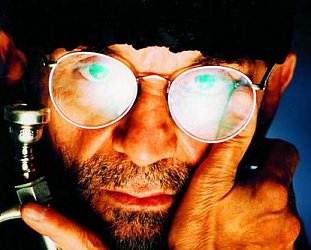Graham Reid | | 1 min read
Place of Emergence

We are right to be suspicious of all the faux-spirituality which attends so-called "Native American" detritus: cheap dream catchers manufactured by the thousand to hang from rear-view mirrors, your spirit animals determined in a 20 minute session with a self-described shaman who used to sell real estate until the market crashed, something akin to chants co-opted for New Age albums, drum circles . . .
But, as with taonga puoro and traditional waiata, when confronted by the real thing – Native American culture and spiritual sites -- there is a chasm between the fake and the authentic which is as wide as the Grand Canyon.
Speaking of which . . .
Hopi elder and singer Clark Tenakhongva – who lives in the ancient Walpi Village on the Canyon's First Mesa on the eastern side in Arizona – is now in his early 60s and after a lifetime in and around the Grand Canyon and living his culture, he here teams up with flute player Gary Stroutsos and percussion player Matthew Nelson for an instructive 50 minute DVD of songs, anecdotes and striking images of that remarkable landscape, and a CD of hypnotic chants and songs.
Elsewhere readers who have been diligent will have encountered Stroutsos previously when we singled out an album of his as being something very different from New Age pretenders.
Stroutsos has – like the late Hirini Melbourne and Richard Nunns did with taonga pouro – immersed himself in the traditions of Native American flutes, explored them in both traditional and contemporary manners and has recorded numerous projects respecting the traditions as well as preserving the living artists and their music.
Nelson is an ethnomusicologist who has spent a decade in the Grand Canyon area and although he uses clay pots from other cultures here they have been accepted by Tenakhongva, who you might guess wouldn't accord that privilege if he wasn't sure.
Nelson also writes the extensive liner notes to this set which explains the performers backgrounds and his and Stroutsos' separate journeys to this music and particularly this spiritual place, Stroutsos playing his flute in an old adobe home in Walpi and then recording the music in the Desert View Watchtower after sunset one night which – as he notes – recalls the sound and resonance of Paul Horn's recording inside the Taj Mahal.
It is very moving, the stories link the ancient and modern worlds and the DVD evocative, especially of you been lucky enough to visit that astonishing chasm and watched in silence as the light changes over many mesmerising hours.
If you've got a dream catcher on your rear-view mirror you'll probably want to take it down after immersing yourself in this music and narrative.
For more on this project go here.






post a comment